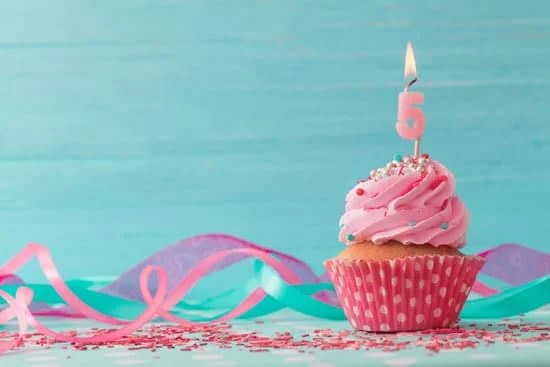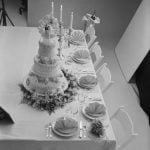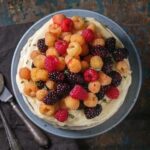Are you wondering how to decorate chiffon cake and make it delightful to both the eyes and the palate? Decoration plays a crucial role in enhancing the overall appeal and flavor of a chiffon cake, elevating it from a simple dessert to a stunning masterpiece. In this article, we will delve into the art of chiffon cake decoration, providing tips, techniques, and ideas to help you create a visually captivating and delicious chiffon cake.
Before diving into the decorative process, it’s important to familiarize yourself with the essential tools and ingredients required for decorating a chiffon cake. From piping bags and tips to various frostings and fillings, having the right supplies is key in achieving professional-looking decorations. We’ll provide a comprehensive list of items you’ll need as well as insight into where to find these specialized tools and ingredients.
Additionally, we will guide you through the process of preparing the base chiffon cake – from baking to cooling – ensuring that you achieve the perfect texture and flavor as a canvas for your decorative endeavors. With our step-by-step instructions and valuable tips, you’ll be well-equipped to start decorating your chiffon cake with confidence.
So if you’re ready to elevate your baking skills and impress your guests with stunning chiffon cake decorations, let’s get started on this exciting journey.
Essential Tools and Ingredients
Tools for Decorating
When it comes to decorating a chiffon cake, having the right tools is essential for achieving beautiful and professional-looking results. Some of the essential tools for decorating a chiffon cake include piping bags, tips, offset spatulas, cake decorating turntable, cake combs, and decorative stencils. These tools will help you create intricate designs, smooth frosting surfaces, and add decorative accents to your chiffon cake.
Ingredients for Fillings and Frostings
In addition to the tools needed for decoration, having the right ingredients for fillings and frostings is equally important. Common ingredients for fillings include fruit preserves, curds, whipped cream, or flavored buttercream. As for frostings, options include Swiss meringue buttercream, cream cheese frosting, or ganache. It’s important to consider the flavor profile of your chiffon cake when selecting fillings and frostings to ensure that they complement each other.
Decorative Accents and Edible Decorations
To add an extra touch of creativity and visual appeal to your decorated chiffon cake, consider incorporating decorative accents and edible decorations. Edible flowers, chocolate curls, fresh fruit slices, sprinkles, or edible glitter can all be used to enhance the overall look of the cake. Additionally, consider using food coloring gel to add vibrant colors to your frostings for a visually stunning presentation.
By having these essential tools and ingredients on hand when decorating your chiffon cake, you’ll be well-equipped to bring your creative vision to life and create a show-stopping dessert that not only looks impressive but also tastes delicious. This section will provide you with everything you need to set the stage for successful chiffon cake decoration.
Preparing the Chiffon Cake Base
When it comes to decorating a chiffon cake, the first and most crucial step is to master the base chiffon cake. This delicate and airy cake serves as the canvas for all decorative elements, so it’s essential to ensure that it is baked and prepared to perfection. Here is a step-by-step guide on how to bake and prepare the base chiffon cake, along with important tips and tricks for achieving the perfect texture and flavor.
- Preheat the oven to the appropriate temperature specified in your chiffon cake recipe. It’s crucial to have an accurately preheated oven to ensure that the cake rises evenly and maintains its fluffy texture.
- In a clean, grease-free bowl, whip egg whites until stiff peaks form. This will add airiness and lightness to the batter.
- In a separate bowl, mix together the dry ingredients such as flour, sugar, baking powder, and salt. Make sure there are no lumps in the mixture.
- Create a well in the center of the dry ingredients and add in the egg yolks, oil, water, and any other wet ingredients indicated in your recipe. Gently fold in the whipped egg whites until just combined – be careful not to overmix as this can deflate your batter.
- Pour the batter into an ungreased chiffon cake pan – this is important as the batter needs to cling onto something as it rises during baking.
- Bake according to your recipe’s instructions until a toothpick inserted into the center comes out clean.
By following these steps and incorporating these tips into your chiffon cake baking process, you can ensure that you achieve a light, fluffy base for decorating.
Now that you have mastered preparing a chiffon cake base let us explore some delicious frostings or fillings options that complement this delectable treat.
Choosing the Right Frosting and Fillings
When it comes to decorating a chiffon cake, choosing the right frosting and fillings is crucial for enhancing the flavor and visual appeal of the cake. There are various types of frosting and fillings that work well with chiffon cake, each offering unique flavors and textures to complement the lightness of the cake. From classic buttercream to fruity fillings, there are countless options to explore.
One popular choice for chiffon cakes is a light and airy whipped cream frosting, which adds a delicate sweetness without overpowering the subtle flavor of the cake. To make whipped cream frosting, simply whip heavy cream with powdered sugar and vanilla extract until stiff peaks form. This type of frosting is perfect for those who prefer a less sweet option and want to highlight the natural flavors of the chiffon cake.
For those who enjoy richer flavors, a cream cheese frosting can be an excellent choice for decorating chiffon cake. The tanginess of the cream cheese complements the lightness of the cake, creating a balanced flavor profile that appeals to many palates. Cream cheese frosting can also be flavored with various extracts or citrus zest to add additional depth of flavor.
In addition to frostings, fillings such as fruit compotes, curds, or even chocolate ganache can be used to add bursts of flavor and visual interest to chiffon cakes. These fillings can be spread between layers or incorporated into the design of the cake, creating beautiful contrasting layers when sliced. Overall, choosing the right frosting and fillings is essential in elevating the taste and appearance of a decorated chiffon cake.
| Types of Frosting | Flavor Profile |
|---|---|
| Whipped Cream Frosting | Light and airy with delicate sweetness |
| Cream Cheese Frosting | Richer flavor with a hint of tanginess |
| Other Fillings (fruit compotes, curds, chocolate ganache) | Add bursts of flavor and visual interest to chiffon cakes |
Decorating Techniques
Chiffon cakes are not only delicious but also beautiful, making them the perfect dessert for any special occasion. Decorating a chiffon cake may seem daunting at first, but with the right techniques and tools, you can create a stunning and impressive masterpiece. In this section, we will explore different decorating techniques that range from simple to advanced, including piping, frosting, and creative design ideas such as floral decorations and edible accents.
When it comes to decorating a chiffon cake, one of the most common techniques is piping. With various tips and icing consistencies, you can create intricate designs such as rosettes, swirls, or even written messages on top of your chiffon cake. To achieve these designs, simply fill a piping bag with your desired icing and practice on a flat surface before moving on to the cake.
In addition to piping, frosting plays a crucial role in adding visual appeal to chiffon cakes. Whether you opt for a smooth fondant finish or textured buttercream swirls, choosing the right frosting consistency is key to achieving your desired look. For those who prefer a naked cake style, lightly frosting the sides of the cake to reveal its soft crumb texture is another popular option.
Moreover, incorporating floral decorations or edible accents can elevate the overall look of your chiffon cake. Fresh flowers like roses or lavender can add an elegant touch to your creation. For those who prefer edible decorations, consider using delicate chocolate shards or gold leaf for a sophisticated finish. No matter which technique you choose to utilize when decorating your chiffon cake, be sure to let your creativity shine through while ensuring that the flavors complement each other well.
| Decorating Techniques | From Simple to Advanced |
|---|---|
| Piping | Frosting |
| Floral Decorations | Edible Accents |
Tips for Success
When it comes to decorating a chiffon cake, there are several tips and expert advice that can help you achieve professional-looking results. Whether you’re a beginner or an experienced baker, these tips will ensure that your chiffon cake decorations are flawless and visually appealing. Here are some key tips to keep in mind when decorating your chiffon cake:
- Choose the right frosting consistency: One of the most important factors in achieving a beautifully decorated chiffon cake is using the right frosting consistency. If your frosting is too stiff, it will be difficult to spread and may result in a messy appearance.
On the other hand, if the frosting is too runny, it won’t hold its shape when piped onto the cake. Aim for a smooth and creamy consistency that holds its shape but is still easy to work with. - Ensure proper cooling of the cake: Before you start decorating your chiffon cake, it’s crucial to ensure that the cake has cooled completely. Decorating a warm or hot cake can cause the frosting to melt and slide off, resulting in a messy finish. Allow the cake to cool at room temperature or even chill it in the refrigerator before applying any frosting or decorations.
- Use quality piping tools: If you plan on using piping techniques to decorate your chiffon cake, investing in high-quality piping bags and tips is essential. The right piping tools can make a significant difference in achieving neat and precise designs. Additionally, practicing different piping techniques beforehand can help you feel more confident when decorating the actual cake.
Troubleshooting common issues while decorating chiffon cakes can also be helpful:
- If your frosting appears lumpy or curdled, try warming it up slightly by placing the mixing bowl over a pot of simmering water and stirring until smooth.
- To prevent air bubbles from forming in your icing while decorating, gently tap the filled pastry bag on the counter before piping.
- In case your frosting becomes too soft while decorating due to warm temperatures or extended handling, place it back into the refrigerator for a few minutes to firm up before continuing.
By following these expert tips and troubleshooting common issues, you can ensure that your decorated chiffon cake looks professional and visually stunning. Remember to practice patience and precision during the decoration process for best results.
Serving and Storage
When it comes to chiffon cake, presentation is key. Whether you’ve spent hours perfecting the decorations or have opted for a simple yet elegant design, serving the cake in a visually appealing manner can elevate the overall experience for your guests. Additionally, knowing how to properly store the cake ensures that its texture and taste are preserved for as long as possible. In this section, we will discuss the best practices for serving and storing your decorated chiffon cake.
Serving Chiffon Cake
When it comes to serving a decorated chiffon cake, presentation is key. One popular method is to use a decorative cake stand or platter that complements the theme or colors of the cake.
Placing fresh flowers, fruits, or edible embellishments around the base of the cake can add an extra touch of elegance. When slicing and serving the cake, use a sharp knife dipped in hot water and wiped dry between each cut to ensure clean slices without ruining the decorations.
Storage Tips
Proper storage is essential for maintaining the quality and freshness of your decorated chiffon cake. If using a frosting that requires refrigeration, such as cream cheese or custard-based frostings, be sure to store the cake in an airtight container in the refrigerator.
On the other hand, if your frosting is shelf-stable and does not require refrigeration, store the cake in a cool, dry place away from direct sunlight. To prevent drying out, consider lightly covering any exposed portions of cut cake with plastic wrap before placing it in storage.
By following these guidelines for serving and storing your decorated chiffon cakes, you can ensure that not only do they look beautiful when presented but also taste delightful even after being stored for some time.
Inspiration and Ideas
In conclusion, decorating a chiffon cake is an art that requires creativity, skill, and the right tools and ingredients. By following the steps outlined in this article, you can achieve a beautifully decorated chiffon cake that not only looks stunning but also tastes delicious. From preparing the base chiffon cake to choosing the right frosting and fillings, to mastering various decorating techniques, there are numerous ways to elevate your chiffon cake to a work of art.
One of the key takeaways from this guide is the importance of selecting the right frosting and fillings to complement the delicate texture and flavor of chiffon cake. Whether it’s a light whipped cream for a classic finish or a flavorful fruit curd filling for added dimension, the right combination of flavors and textures can truly enhance the overall appeal of your decorated chiffon cake.
Lastly, drawing inspiration from stunning chiffon cake designs and decoration ideas can spark new creativity in your baking endeavors. Whether it’s incorporating floral decorations, experimenting with different piping techniques, or adding edible accents, there are endless possibilities for creating a unique and visually appealing chiffon cake.
With practice and patience, anyone can learn how to decorate chiffon cake like a pro and delight their friends and family with a beautiful masterpiece that is as delightful to look at as it is to eat.
Frequently Asked Questions
What Is the Difference Between a Chiffon Cake and a Sponge Cake?
The main difference between a chiffon cake and a sponge cake lies in the ingredients and method of preparation. Chiffon cakes use oil and have a lighter texture, while sponge cakes use butter or margarine and have a denser crumb.
Can I Decorate a Sponge Cake?
Yes, you can definitely decorate a sponge cake. Whether it’s with frosting, whipped cream, fresh fruit, or chocolate shavings, there are plenty of ways to add visual appeal to a sponge cake to make it look as good as it tastes.
Can a Chiffon Cake Be Stacked?
While chiffon cakes are light and airy, they can be a bit more delicate than traditional sponge cakes. Stacking them requires care and support to prevent them from collapsing or losing their structure. It’s best to use proper techniques and support when stacking chiffon cakes for layering or tiered designs.

Welcome to our cake decorating blog! My name is Destiny Flores, and I am the proud owner of a cake decorating business named Cake Karma. Our mission is to provide delicious, beautiful cakes for all occasions. We specialize in creating custom cakes that are tailored specifically to each customer’s individual needs and tastes.





